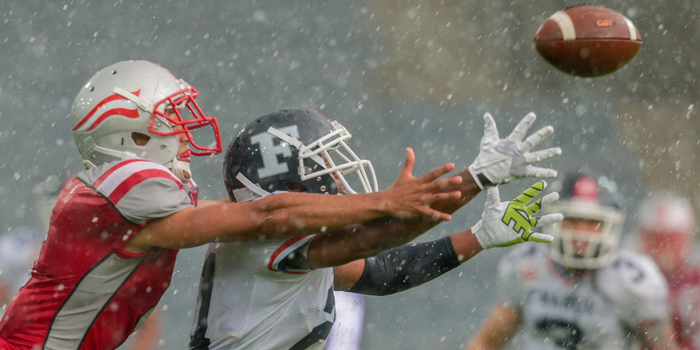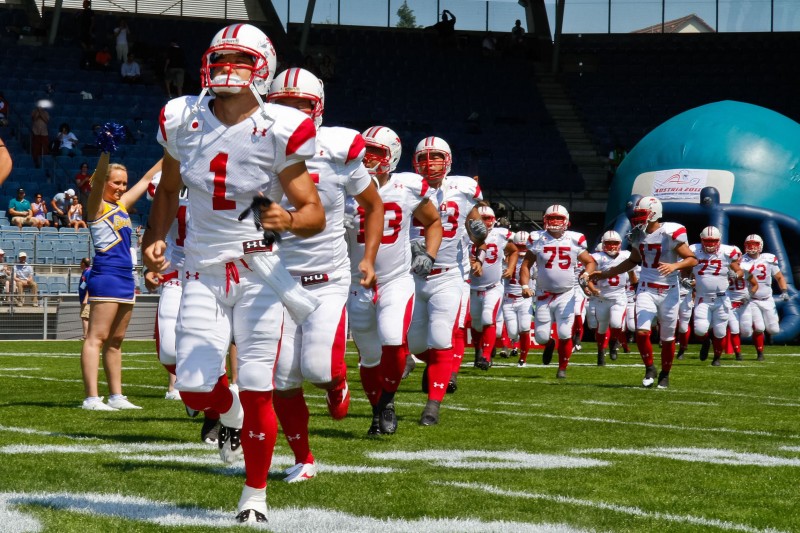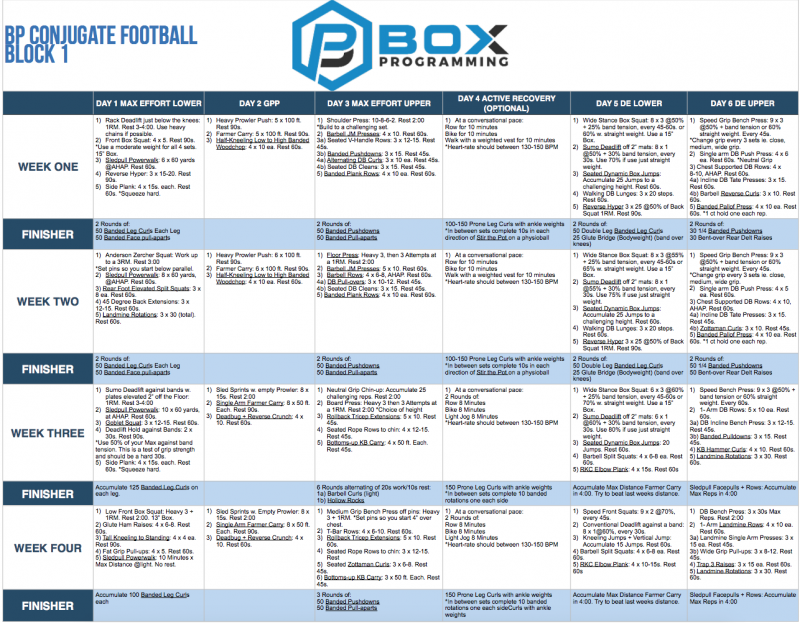
In 2004 I was introduced to the conjugate method at a facility where I trained during college. I was also lucky enough to intern at this same facility, where I had access to some great strength and conditioning coaches who were highly influential on my own knowledge and methodology. During this time I experienced some of the greatest gains in strength and power I have ever experienced. I was able to return to my football team testing and break every record for my position (running back) in the back squat (505 pounds), bench press (350 pounds), and power clean (315 pounds). The results that I experienced were consistent, whereas using other methods I'd always seemed to hit a plateau or feel run-down.
The concepts I'm going to introduce are hardly new, but this article is intended for those who are less familiar with the conjugate method. It is also intended for strength coaches who are looking to take their athletes to the next level. All in all, there are some simple things you can do to ensure your athletes reap the benefits of this system. Additionally, I would highly recommend you read Special Strength Development for All Sports by Louie Simmons. At this point, I've read every single book and article Louie has ever published, but this one takes the cake for me.
The Program
Contrary to what most believe, you do not need to use accommodating resistance or be a powerlifter to utilize the conjugate method effectively. Of course, if you're able to use accommodating resistance and specialty bars it's an added bonus, especially as your athletes mature and gain training experience. But in the beginning, it's not 100% necessary. Keep in mind that the conjugate method is 80% special exercises. What this means is that your athletes will spend the bulk of their training time working on improving their primary movers, building their base through general physical preparedness (GPP) work, and performing measures that can have a profound effect on reducing the risk of injury.
RELATED: Why You Should Use the Conjugate Method for Your Athletes
This system, in my opinion, works wonders for football players who already have experience in the weight room and know how to squat, bench, and deadlift efficiently. I was introduced to the conjugate method when I was 20 years of age after coming off 12-weeks of a BFS (Bigger Faster Stronger) program. I incurred some great results with the BFS method, as there were many parallels between the BFS method and the conjugate method, but these results paled in comparison to what I would later experience.
With the conjugate method, progress and recovery were more consistent. I was also able to effectively improve upon some imbalances that I developed that had resulted in a few minor injuries and pulls. The following seasons, with a full summer of the conjugate method under my belt, all of my nagging injuries and pains went away, in addition to the difference in my speed and power. It is a real testament to the system that I have been injury-free for the past 10 years despite continuously pushing my boundaries and hitting new personal records.
I attribute this to the fact that I spend the majority of my training building my weak links. This means that although most of the work isn't "sexy," the methods fucking work. Sure, it's more fun to squat, bench, deadlift, and clean, but if you're injured, you can't do shit. And if your athletes are injured, you're out of a job.
Sled Work
Sled work is an integral part of this program. Back when I was training, this was a missing link, and I can't imagine the difference it would've made. Sleds were used but not consistently, and we certainly weren't privy to "power walking" with the sled attached to our weight belts. To be honest, I've seen athletes of all levels with a variety of goals benefit from power walking with a sled. I would regularly prescribe sled work to endurance athletes that are training for half or full marathons. These athletes would always report back they were amazed how much faster they were or how much they set a new personal record by (albeit they performed significantly less long-distance work). Additionally, we regularly use power walking with a sled for our general population athletes and even more for our competitive box programming athletes.
The fact of the matter is that we can use the sled for strengthening the posterior chain and directly influencing sprint speed. Second, we can use the sled for a warm-up tool on either a max effort or dynamic effort lower body training day. Lastly, we can power walk with the sled between extreme sessions for additional strength work that won't tear us up for subsequent sessions. The sled is an invaluable tool, and for how inexpensive they are, it's an amazing investment. I really believe if more coaches were implementing the sled we'd see athletes improving their 40-yard times and staying away from hamstring and knee injuries.
Aerobic Work
Aerobic work is part of this programming. I will say I was of the school of thought that aerobic work had no place in programming for a football player. I was dead wrong. Aerobic work has a number of benefits. One of the more obvious is facilitating recovery. One of the less obvious is that the aerobic system is connected to ATP production for explosive movements like sprints and max effort lifts. In description, the more efficient an athlete's aerobic system is, the better they'll be able to replenish ATP and efficiently use it when needed.
The work we prescribe is low effort, where your athletes' heart rate should be between 130 and 150 beats per minute, meaning your athletes will likely be able to carry on a conversation while completing the work. That's exactly what we want. This work can be boring, but it's our job to change things up and get creative so we can keep our athletes engaged. This work can also be done by your athletes outside of the gym if needed, as it may be hard for your athletes to get to your facility five or six days in a row.
Band Work
You'll also see the use of high volume band work in this program. High rep band work can influence connective tissue health where tendons will have a higher potential for use of stored kinetic energy. We'll perform this work weekly for very high volume. This work should not take longer than five minutes to complete and should be performed with rapid movements.
The Template
There are a few caveats here before we introduce the programming. We are assuming your athletes already have proper movement patterns and can efficiently perform compound movements. If not, this would certainly change max effort work. It's likely this work would entail more repetition work to reinforce basic movement patterns. Also, the rotation of variations would be limited as to allow more exposure to the basic lifts.
Here are basic lists of some of my go-to movements. These are the most commonly used movements but our variations are not limited to what is included on the list.
Monday — Max Effort Lower Body
- Jumps
- Wide Stance Box Squats
- Rack Deadlift
- Anderson Zercher Squat
- Anderson Front Squat
- Front Box Squat
- Sumo Deadlift from Two-Inch Mats
- Concentric Good Morning
All lifts this day will be taken to a heavy effort or max effort following these guidelines:
- 1-3 rep maxes
- 1-3 rep heavy rep sets
- 2-3 minutes recovery between heavy sets
- 8-10 total sets
Tuesday — GPP Work
- Sled Work
- Loaded Carries
- Accessory Work
Wednesday — Max Effort Upper Body or Dynamic Effort Upper Body
- Football Bar Bench Press
- Pin Bench Press
- Push Press
- Weighted Dips
- Weighted Pull-Ups/Chin-Ups (Various Grips)
- Floor Press
All lifts this day will be taken to a heavy effort or max effort following these guidelines:
- 1-3 rep maxes
- 1-3 rep heavy rep sets
- 2-3 minutes recovery between heavy sets
- 8-10 total sets
Thursday — Aerobic Recovery Work
Don't worry, your athletes won't get slower or smaller.
Friday — Dynamic Effort Lower Body
Perform a set every 40 to 60 seconds.
- Jumps
- Wide Stance Box Squats
- Speed Pull Deadlifts
- Speed Pull Sumo Deadlifts
- Power Cleans and Variations
- Speed Back Squats
- Speed Front Squats
- Front Box Squats
Saturday/Sunday — Dynamic Effort Upper Body or Repetition Work
Perform a set every 40 to 60 seconds.
- Speed Bench Press (Alternating Grips)
- Push Press
- Dumbbell Repetition Work
Here are a few more things to keep in mind:
- There are 72 hours between max effort and dynamic effort sessions.
- Most times, max effort variations will rotate weekly.
- Dynamic effort variations will be done in two to three week waves (depending on the season).
- Follow Prilepin's chart.
- Sled work will most likely be done multiple times a week.
- Although this is only a small list of variations, with your younger athletes I find it to be more effective to choose from a smaller list, retesting max effort variations every 12 weeks.
In short, I feel very confident that you'll see a lot of value in this approach with your football players. We have an obligation to not only improve our athlete’s ability in terms of strength and power development, but also to help them stay away from common injuries. Of course, no one is completely impervious to injury, as sometimes on the field of play, shit happens. But the common injuries like hamstrings strains can certainly be prevented. In addition, we influence our athletes' ability to absorb force with the conjugate method, which may provide a bigger piece of the puzzle for long-term health of your athletes.
[click image to enlarge]
Download BP Conjugate Football Block 1
Images (including header image) credit: Herbert Kratky © 123rf.com













Yes, I'd be happy to include a follow-up to this with additional programming.
The school I'm working with only lets players come in Monday-Friday. Really love the program, just trying to find a way to implement this here.
Great question. I would restructure the week a bit to something like this:
Monday: ME Lower
Tuesday: DE Upper
Wednesday: Sledwork, loaded carries OR Recovery Measures (for young kids you could get away with a consistent dose of GPP work here ie. strongman type aerobic work)
Thursday: DE Lower
Friday: ME Upper
Does that make sense?
Good question! What I would do is restructure the week to look like this:
Monday: ME Lower
Tuesday: DE Upper
Wednesday: GPP Work (Sled work, Loaded Carries, Strongman) OR Recovery measures depending on how your athletes are feeling (Cardiac output type cyclical work would fit well here).
Thursday: DE Lower
Friday: ME Upper
Does that make sense?
There a number of way you could structure in-season programming, but without knowing when your athletes are training it would be tough to speculate.
I would opt for a 3-day/week split where you'd essentially combine 2 sessions into one. In your case it could look something like:
Saturday ME LOWER
Sunday OFF
Tuesday DE LOWER/REP UPPER
Wednesday Recovery measures
Thursday Game Day
Friday OFF
similar question to Shad, I train Monday and Wednesday and have games on sundays. From the looks of your other response it seems I should take out ME upper. Also I play a sport that does not have a real offseason, maybe a 2 week break between seasons, how would you modify to incorporate that accumulated fatigue.
There's one thing on my mind when it comes to optimal recovery time between the sessions (72hrs).
1. When would I do my sprints / lactate treshold interval trainings? I think both of these need 72hrs to recover from. I could maybe do the short sprints once per month instead of any heavy lift on ME lower body day and then finish up the work at the gym with the assessories, but I'm not sure.
Cheers! :)